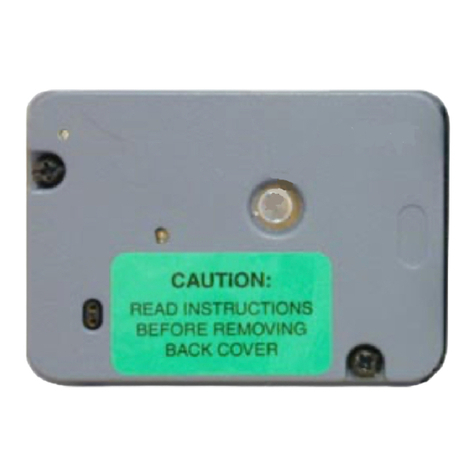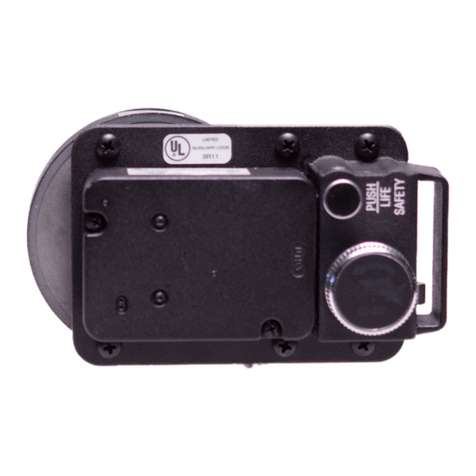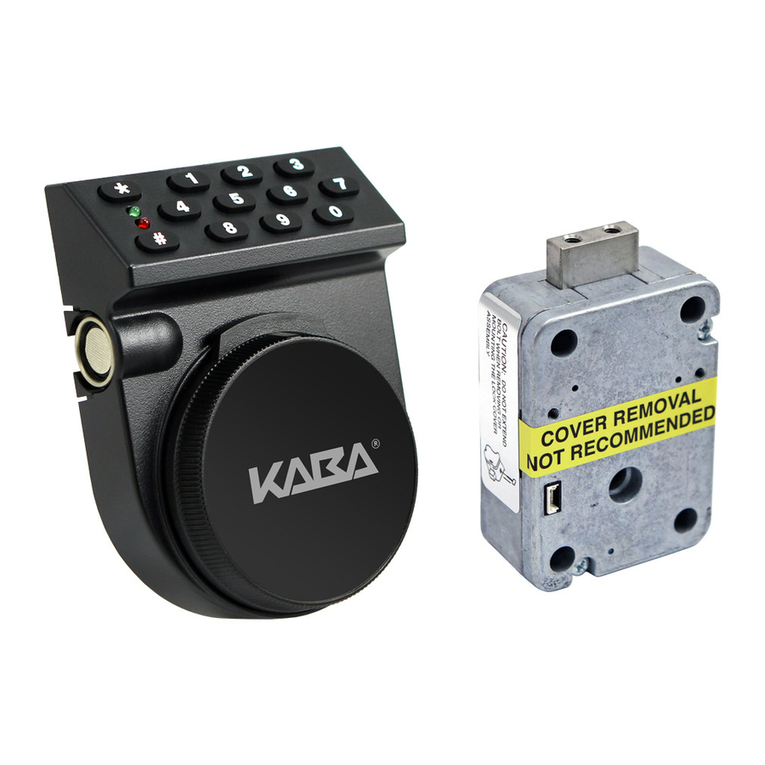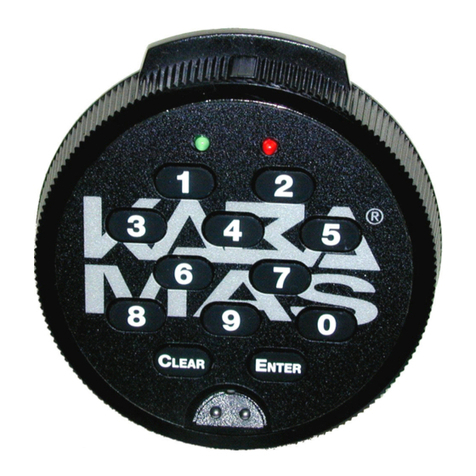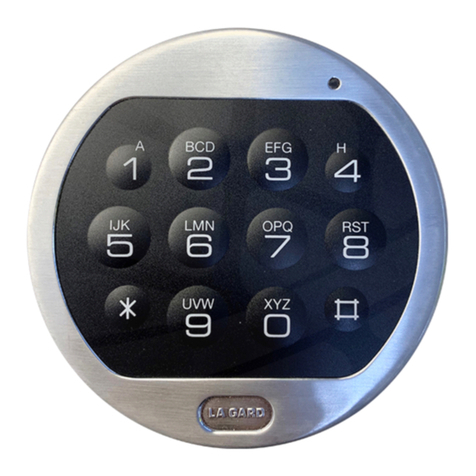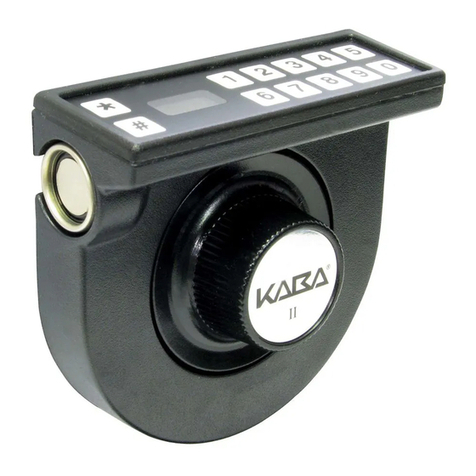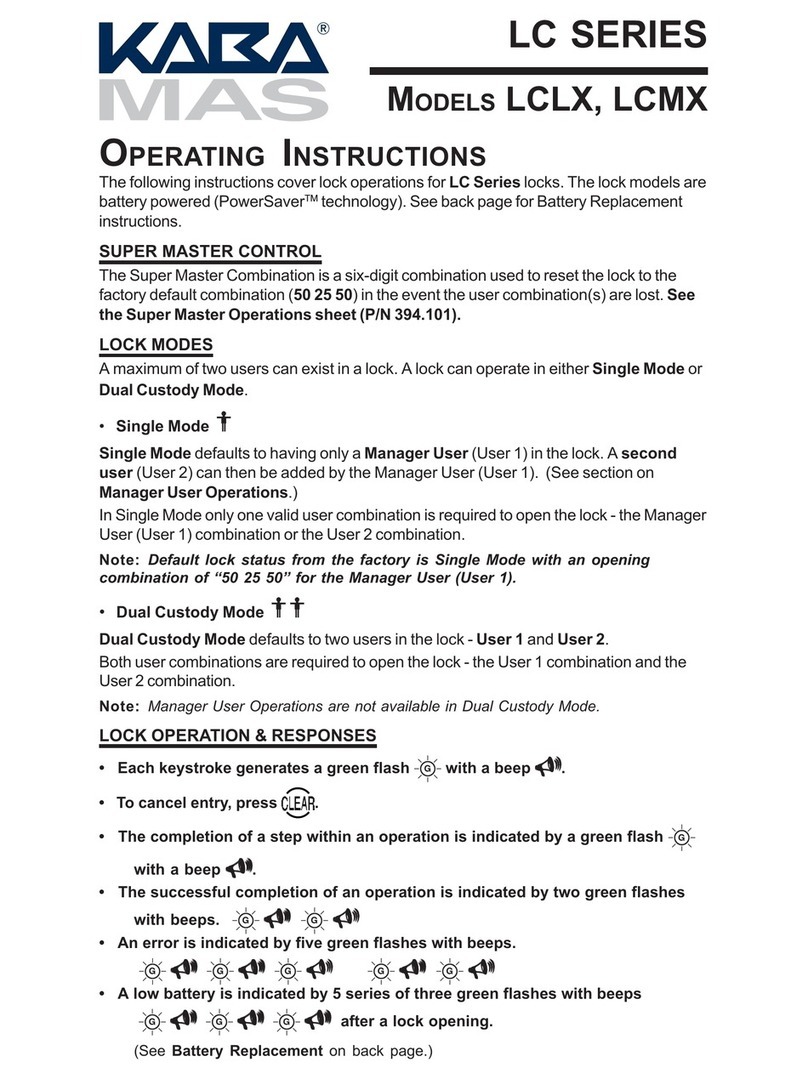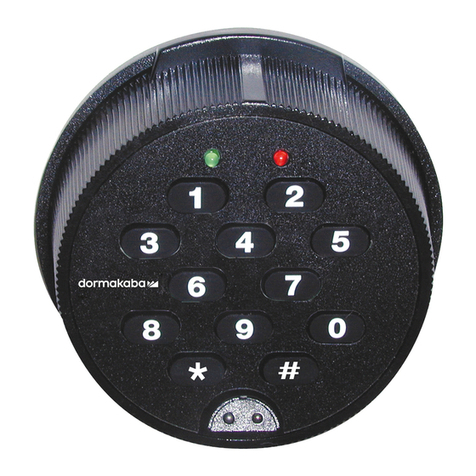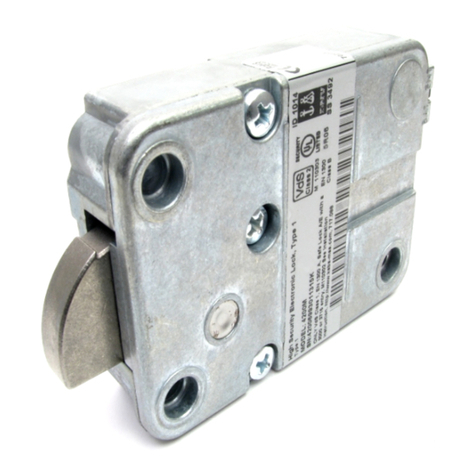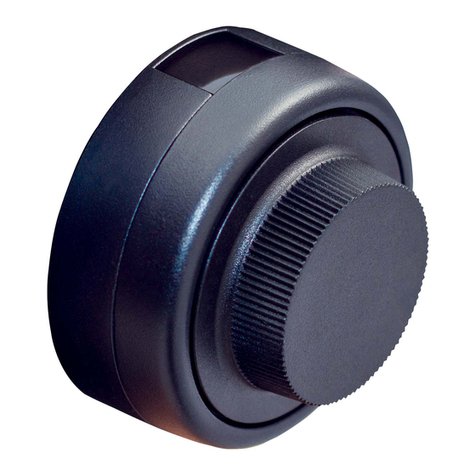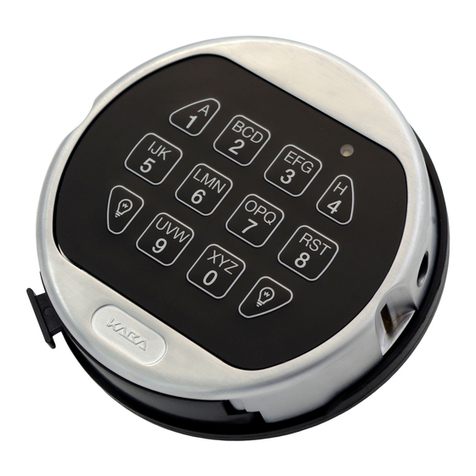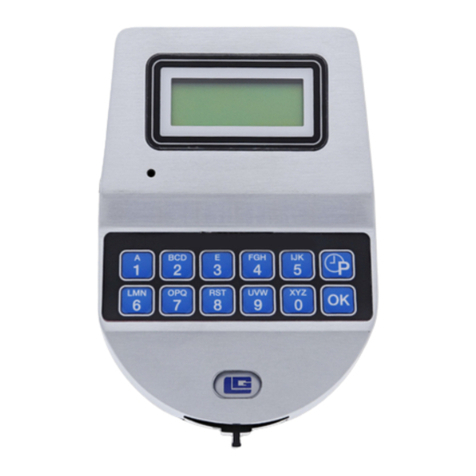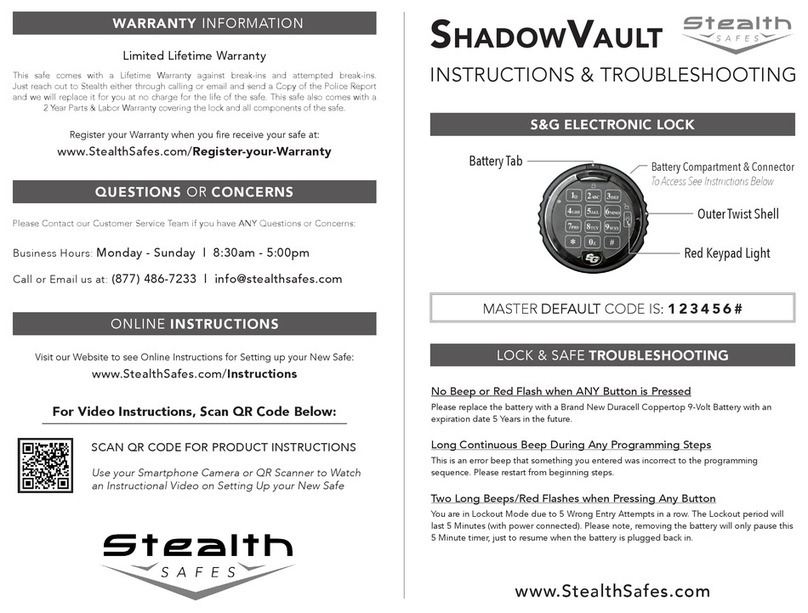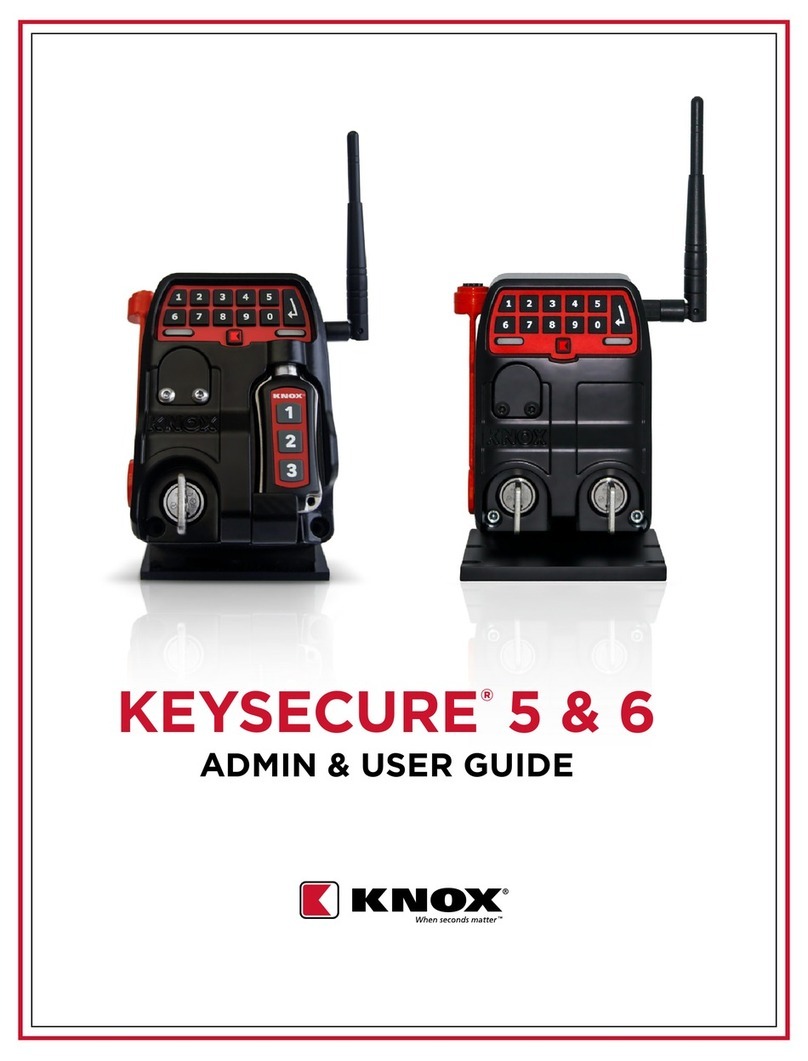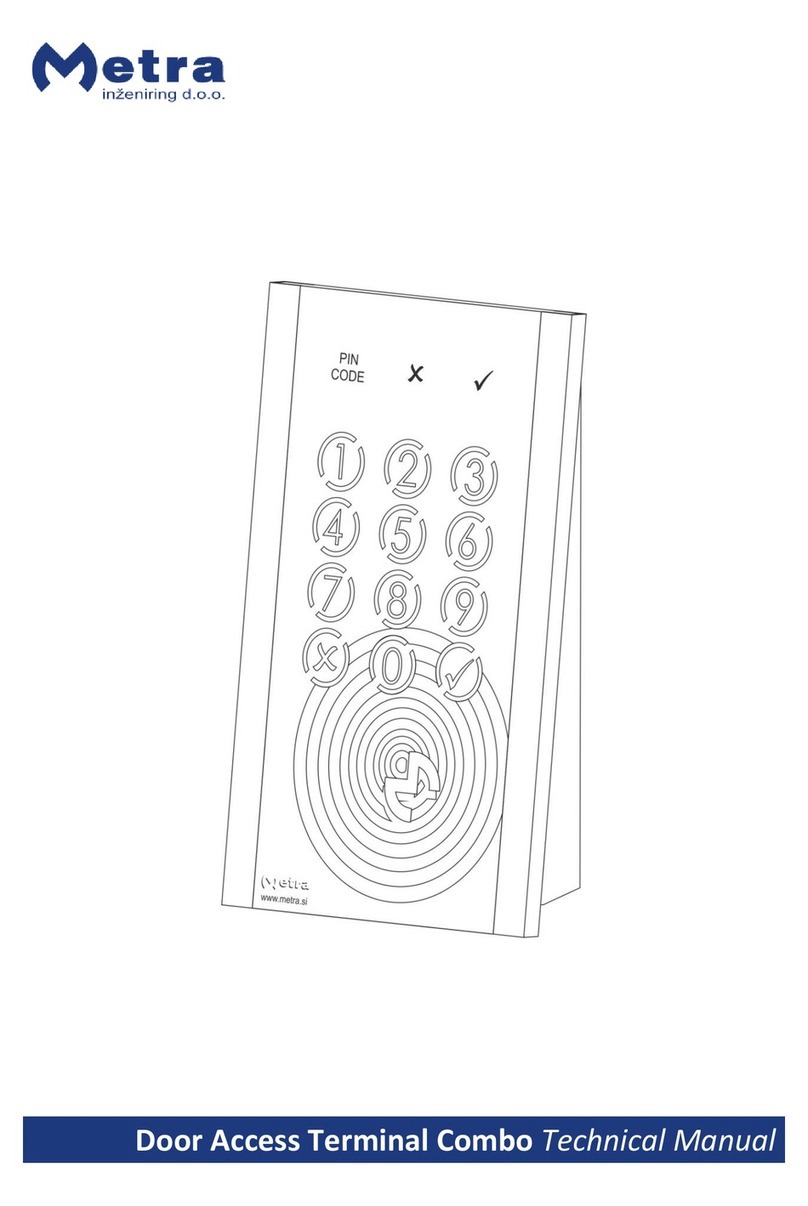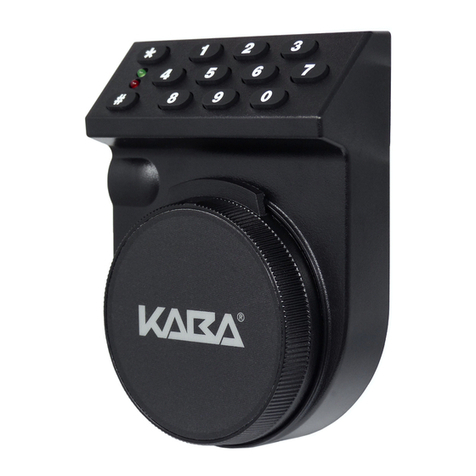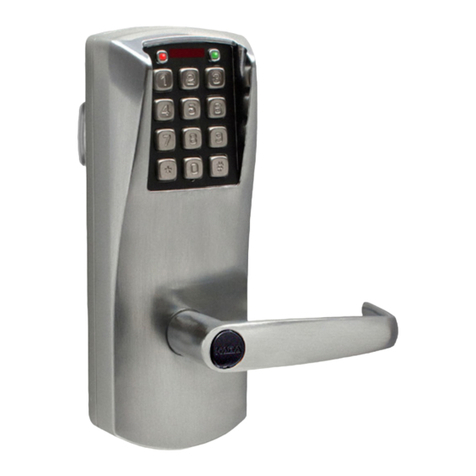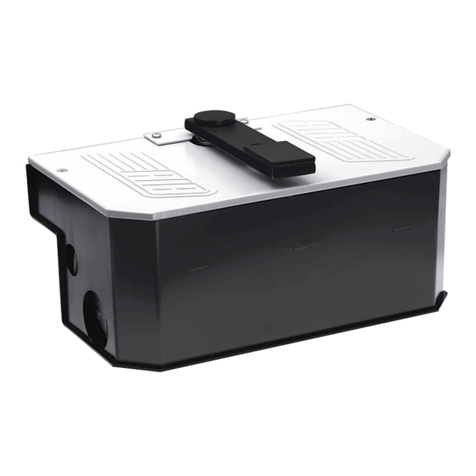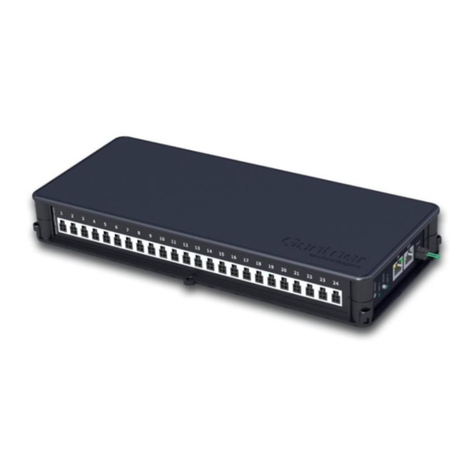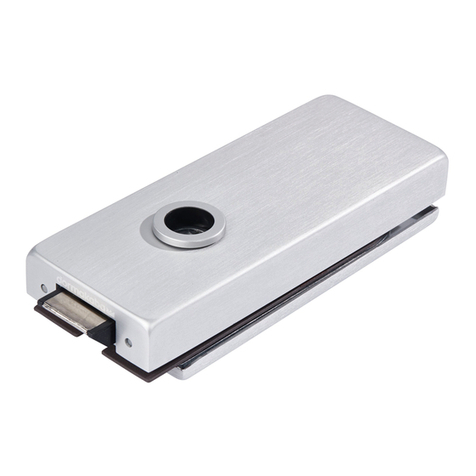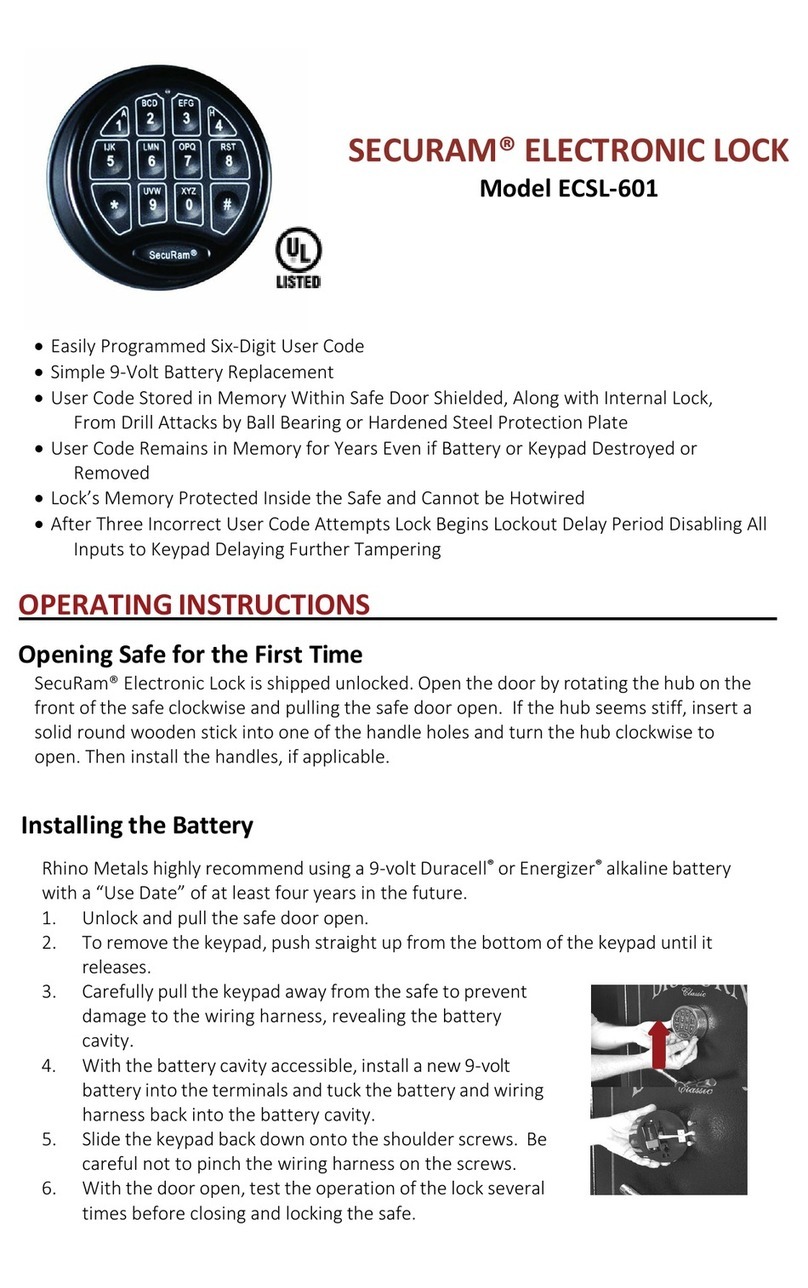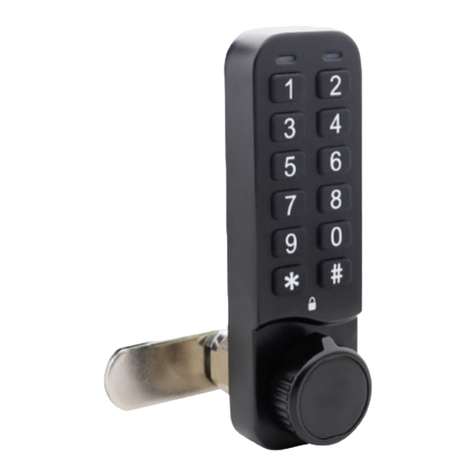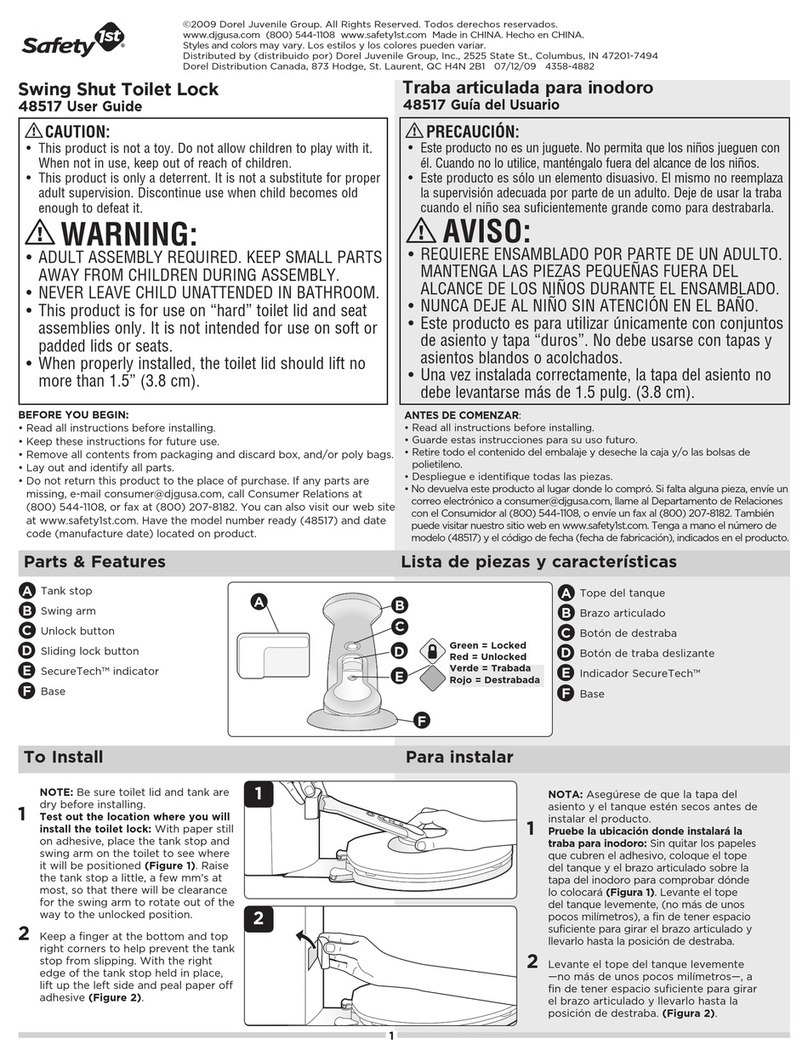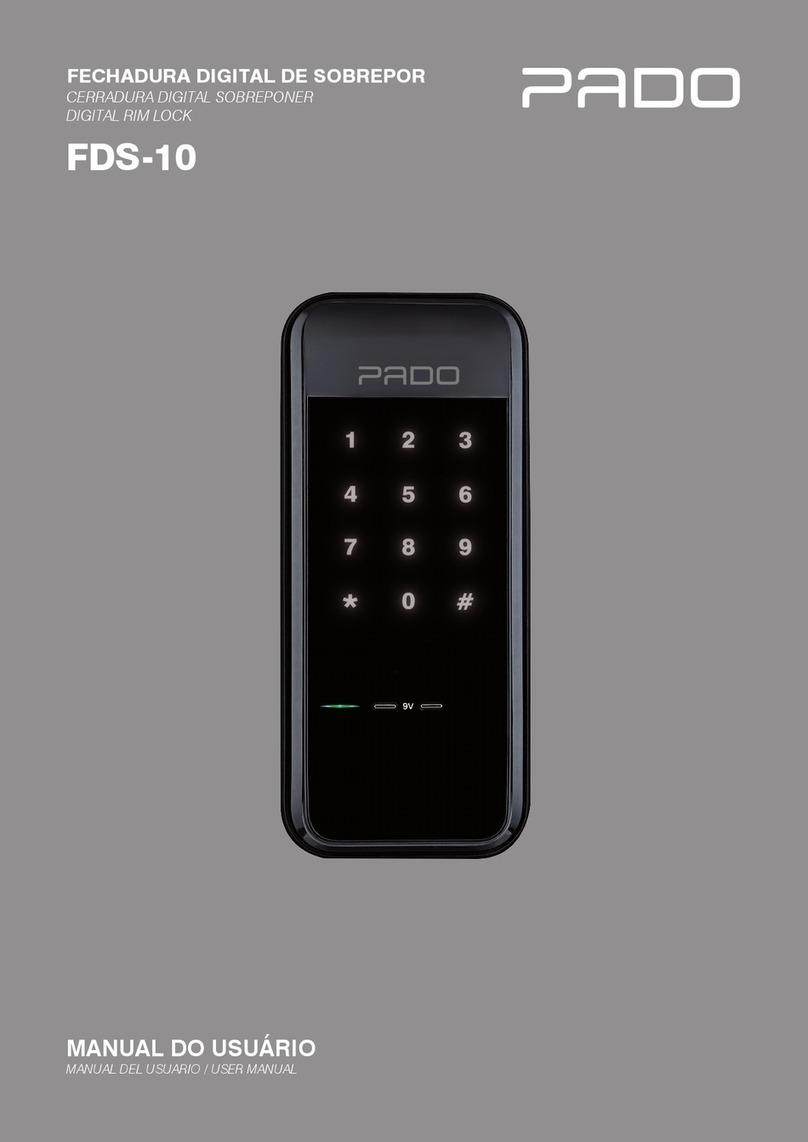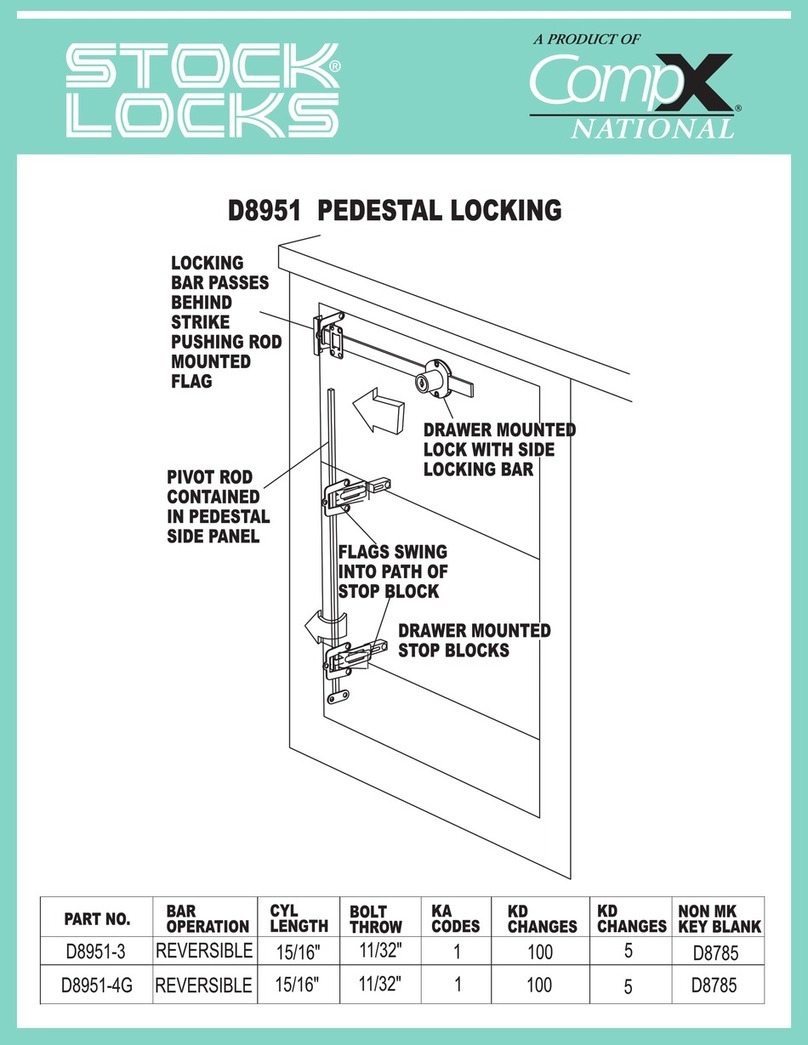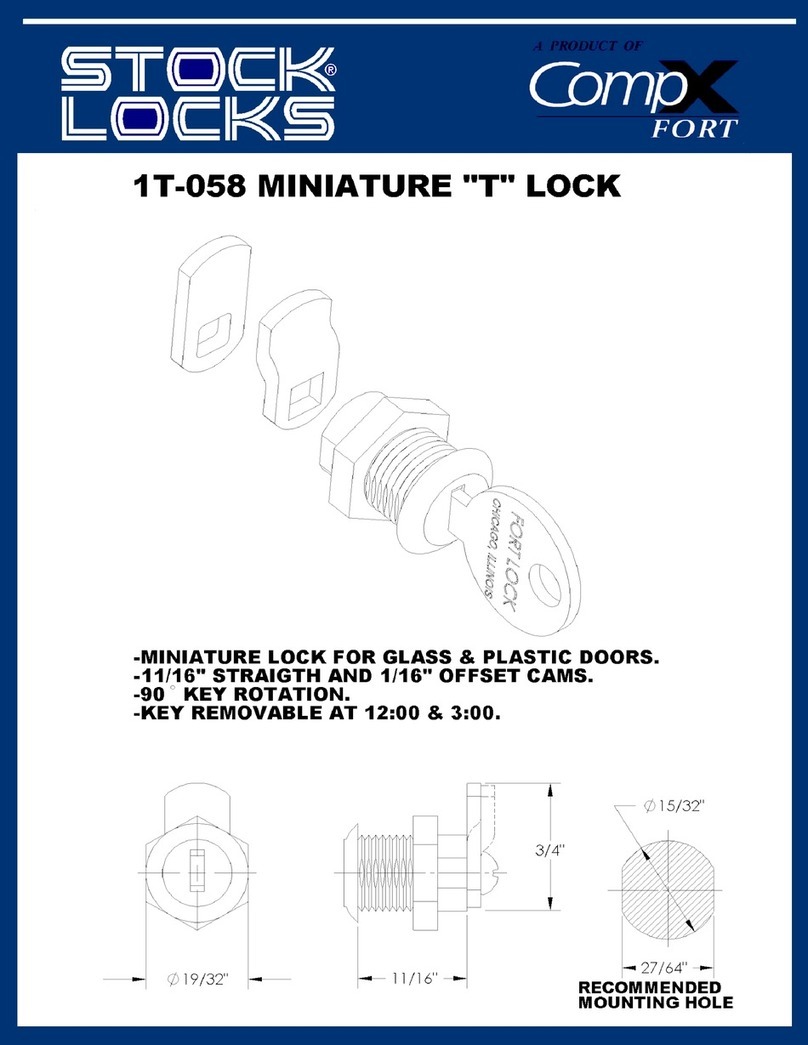Part I: Install Front Housing Assembly
1. Route the end of the lock
cable with the Picoflex connector
from the back of the container
door through the cable routing
hole so that approx. 6 1/2”
(165.1mm) of the cable is
available from the front. (Figure
4)
2. Hold the dial assembly in the
upright position. (The generator
cable should be positioned at
approximately one o’clock.)
(Figure 5)
3. Guide the ribbon cable
through the cable receiving hole.
(Figure 6).
4. Align the dial assembly with
the mounting holes, and position
against the outside of the
container door, ensuring that 6
1/2” (165.1mm) of cable is still
available from the front.
5. While holding the dial
assembly in place, attach it to
the container door using the two
#8-32 dial assembly mounting
screws and the 9/64” Allen
wrench. Tighten the screws
(Torque 17-20 lbs., 1.9-2.25 N-M)
and then ensure that the dial
turns smoothly. (Figure 7)
6. Insert the 4-pin generator
cable on the dial assembly into
the 4-pin connector on the back
of the keypad assembly. The
generator cable will only connect
to the keypad assembly in one
orientation. (Figure 8)
7. Insert the keyed Picoflex
connector on the end of the
ribbon cable into the connection
header on the keypad. (Figure 9)
8. Position the generator cable
and the ribbon cable around the
generator in a counter-clockwise
direction to ensure that the
cables will not be pinched when
you attach the keypad assembly.
(Figure 10)
Caution Next Step:
Once the
keypad assembly is snapped into
place, it cannot be easily
removed without performing an
“uninstall” procedure. Do not
snap the keypad assembly into
place when performing the next
step.
9. Align the keypad assembly in
the upright position and
carefully insert the two catches
on the keypad assembly into the
notches on the dial assembly, but
do not snap the keypad
assembly into place. (Figure 11)
10. Plug the RJ11 end of the cable into the lock case in order to test
the lock.
11. Test the operation of the lock before completing the installation
of the keypad assembly by verifying the following:
Note:
If the keypad is not oriented correctly, you can remove the
keypad and adjust the orientation of the dial assembly.
• Power the lock by turning the dial back and forth until simultaneous
green and red flashes display and two beeps sound to indicate that
the lock is powered. Key in the Factory Combination. (For a Model 52
or T52, enter “502550”. For a Model 252 or 552, enter a two-digit
number in the range from 01-20, followed by “502550”.) If the
combination is entered successfully, continuous green flashes display
to indicate that the lock is ready to open. Rotate the container handle
to unlock. Then rotate the handle back to the locked position.
Note:
After correctly entering a valid combination, you must
retract the bolt within 4-6 seconds.
12. Unplug the RJ11 end of the cable from the lock case and lay the
case aside.
13. After successfully testing lock operation and verifying that none
of the cables will be pinched, snap the keypad assembly into place.
Part II: Install Lock Case Assembly
WARNING:
Do not take the lock case assembly apart. The lock
will not operate if the back cover has been removed.
1. Ensure that the cable lays in the cable channel as you mount the
lock case assembly to the inside of the container door using the three
1/4-20 (or M6-1) screws (Torque 25-30 lbs., 2.8-3.4 N-M), allowing 1/16”
(1.6mm) clearance between the lock bolt and the container locking bar.
(See Figure 2 for proper clearances and positioning when installing a
square nose slide bolt. See Figure 3 for proper clearances, strike types
and contact points when installing a roller slide bolt.)
Note:
The lock case
assembly can be mounted
in bolt roller up position or
bolt roller down position
(Figure 12) for all mounting
locations. It is recommended
that you use Loctite
®
262
(Red) on the lock case
mounting screws.
2. Test the operation of the
lock again. If the lock does
not operate properly, refer to the following instructions to “Uninstall
Keypad Assembly”.
3. If your lock includes the Battery Assist option, you should now
mount the battery clip inside the door near the lock and install a fresh
9 Volt Alkaline battery.
Note:
To remove any excess
cable or if you choose not to use
the Battery Assist option, wrap
and tie the battery assist cable.
(Figure 14) If you do not ever
plan on using the Battery Assist
option, you can cut the cable
next to the lock case to remove it.
© 2005-2006 Kaba Mas Corporation. All rights reserved.
Product warranty information can be found at: www.kaba-mas.com
Kaba Mas Corporation
749 W. Short Street, Lexington, KY 40508 USA
Phone: (859) 253-4744 FAX: (859) 255-2655
Customer Service: (800) 950-4744
Figure 4
Figure 6
Figure 7
Figure 13
Uninstall Keypad Assembly
1. Remove the decal from
the keypad assembly.
2. Insert a flat head
screwdriver into the slot in
the upper left hand corner of
the keypad to release one of
the two keypad catches.
(Figure 13)
3. Carefully pull the keypad
assembly out from the dial
assembly.
4. Check for pinched or
detached cables.
Figure 10
Figure 11
Figure 8 Figure 9
Figure 12
Figure 5
Generator cable
is at one o’clock
6 1/2” of Cable
Figure 14
